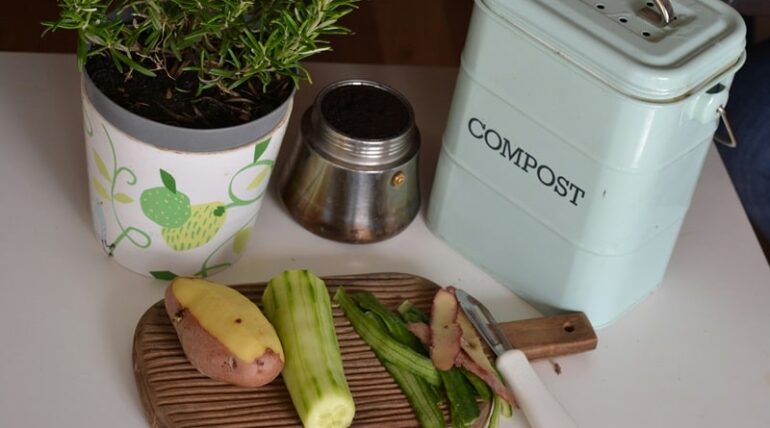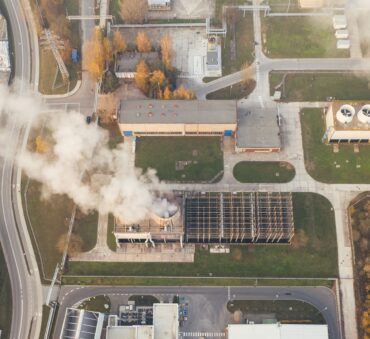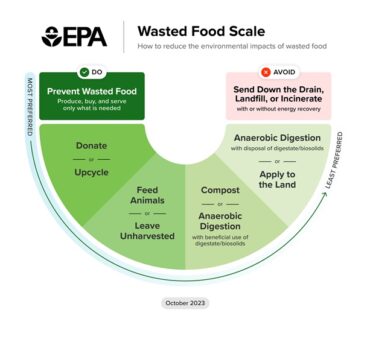Food waste is an issue that touches every corner of our daily lives, from the kitchen tables in our homes to the sprawling networks of global food supply chains. It represents not only a significant loss of valuable resources but also a missed opportunity to support communities in need, reduce environmental impact, and drive economic savings. However, as we look closer at this pervasive issue, it becomes clear that reducing food waste is not just about minimizing loss—it’s also about rethinking our relationship with food.
Key Takeaways
- Conscious consumption, meal planning and avoiding impulse purchases are foundational steps toward reducing food waste.
- Accepting “imperfect” produce can significantly decrease food waste, as it challenges the aesthetic standards that lead to the discard of nutritious and flavorful fruits and vegetables before they reach consumers.
- Proper understanding and application of food labels, coupled with efficient food storage practices can greatly help to prevent unnecessary food waste at the consumer level.
- Creative repurposing of leftovers into new meals and the implementation of composting practices, both at home and within communities, can transform waste into resources, promote sustainability, and reduce environmental impact.
- Supporting local food systems, leveraging technology for food waste management, and engaging in food donation and sharing initiatives are effective strategies for minimizing food miles, enhancing the efficiency of food use, and fostering community engagement.
What is Food Waste?
Food waste encompasses a broad spectrum of issues, extending from the initial stages of production to the final moments of consumption. It’s not only about the items we throw away but also about the edible food that becomes lost or remains unused throughout the food supply chain. This inefficiency leads to a significant loss of resources and has a detrimental effect on our environment through unnecessary emissions. Acknowledging the breadth of this issue is crucial for enacting change.
This food waste guide sets out to provide a comprehensive range of solutions to reduce food waste, offering strategies that individuals, households, and communities can adopt.

1. Smart Shopping and Meal Planning
When we try to tackle the question of how to reduce food waste, the first course of action should be to become mindful of what we consume, how much we actually consume, and make a conscious effort to avoid impulse purchases. While so many products are designed to catch our eye, whether due to promotions, attractive packaging, or a filling temporary desire, often these items don’t fit into our meal plans or nutritional needs, leading to their eventual waste.
Instead, the act of purchasing food should be intentional, with a clear plan for each item’s use. By creating a detailed shopping list based on pre-planned meals, this acts as a guide that keeps our shopping focused and aligned with our actual needs and what we intend to prepare.
2. Embracing “Ugly” Produce
Traditionally, fruits and vegetables that do not meet certain aesthetic standards are often deemed as inedible ugly food waste. Farmers and retailers are keenly aware of this standard among consumers, and so tons of food products are discarded before they ever reach the shelves. This practice contributes significantly to the food waste problem, yet these items are just as nutritious and flavorful as their picture-perfect counterparts.

By allowing a little bit of imperfection into our kitchens, consumers can help make a huge difference in diverting perfectly good food from landfills. This simple action sends a message to retailers and producers alike, encouraging a shift towards valuing all produce, regardless of its appearance. This both helps reduce the environmental impact as well as supports farmers by ensuring more of their harvest reaches consumers.
3. Understanding of Labels Ensuring Efficient Food Storage
Often, perfectly edible food gets thrown out simply due to misunderstanding the differences between “best before,” “use by,” and “sell by” dates.
“Sell by” dates are intended for retailers, indicating how long a product can be displayed for sale. These dates help stores manage inventory but are not a direct indicator of the product’s safety for consumption. In fact, most products are safe to eat beyond their “sell by” date as long as they have been stored correctly.
“Best before” dates indicate the time frame within which the food is expected to retain its best taste and texture. While the product may not be at its prime after this date, generally, many products are still safe and acceptable for consumption.
“Use by” dates are the dates consumers should be most concerned with as these relate to safety, marking the deadline for consuming the food without health risks.
However, these food waste expiration dates also go hand-in-hand with whether or not the product is properly stored. Different types of food require specific storage conditions to preserve their freshness and nutritional value. For instance, certain fruits and vegetables last longer when stored in a cool, dry place, while others may require refrigeration to stay fresh.
Once again, here, it’s important to read and understand the product label to follow the recommended storage method.

4. Creative Use of Leftovers
Using leftovers to prepare new meals is a practical approach for anyone looking to reduce waste and get the most out of their food purchases. It’s about seeing the value in what remains from previous meals and transforming it into something new and enjoyable. This method encourages a mindful way of cooking where every ingredient has its place and purpose. It’s an opportunity to get creative in the kitchen without the need for additional resources. It’s a great strategy for both budget-conscious consumers and those looking to simplify their meal preparation routines.
Some ideas for this could include:
- Vegetables: Blend them into soups or chop them for salads.
- Rice or Grains: Incorporate into stir-fries or use as a base for new dishes.
- Meat: Add to sandwiches, wraps, or use as a topping for salads.
- Pasta: Mix with fresh ingredients for a pasta salad or use in a baked dish.
- Bread: Make into breadcrumbs for coatings or use for making toast or bread pudding.
5. Composting: Home and Community Initiatives
Composting food waste is a highly effective method for recycling organic materials, benefiting both individual households and broader communities. This process converts kitchen scraps and yard waste into valuable compost, a nutrient-rich soil amendment that enhances plant growth and soil health.
Setting Up a Home Compost System
Getting Started
- Select a Location: Choose a dry, shady spot near a water source for your compost pile or bin.
- Choose a Compost Bin: Options range from open piles to bins and tumblers. Consider your space and the amount of waste you produce.
- Know What to Compost: Mix green waste (vegetable scraps, coffee grounds) with brown waste (leaves, shredded newspaper, cardboard).
Necessary Tools
- Compost bin or tumbler: To contain the compost.
- Pitchfork or shovel: For turning the compost.
- Garden hose with a spray head: To moisten dry compost.
- Gloves: To protect your hands during handling.
Methods and Maintenance Tips
- Layering: Start with a layer of brown materials, add green materials on top, and sprinkle with water. Repeat until the bin is filled.
- Turning: Regularly turn your pile to aerate it, which speeds up the decomposition process.
- Moisture Control: Keep the compost moist, but not wet. If it’s too dry, add water; if too wet, add more brown materials.
- Temperature Monitoring: A warm compost pile indicates active decomposition. If it cools down, turn it to reintroduce oxygen and reactivate the process.
- Harvesting: Compost is ready when it’s dark, crumbly, and has an earthy smell. This can take anywhere from two months to a year.
Participating in Community Composting
Participating in community composting programs offers a substantial benefit by significantly reducing the amount of waste that ends up in landfills. When organic waste decomposes in landfills, it produces methane, a potent greenhouse gas. Composting these materials not only prevents this emission but also turns waste into valuable compost that can enrich soil, supporting local agriculture and gardening projects. This process promotes a circular economy, where waste is seen not as an end-product but as a resource for new growth.
Additionally, community composting encourages stronger bonds within communities by bringing people together for a common purpose. It provides an opportunity for individuals to contribute to a larger environmental effort while engaging in educational activities about sustainable living practices. This engagement helps to raise awareness about the importance of reducing waste and offers a hands-on approach to making a tangible difference. Through participation, community members gain a sense of accomplishment and connection, knowing their actions contribute to a healthier planet and a more sustainable future.
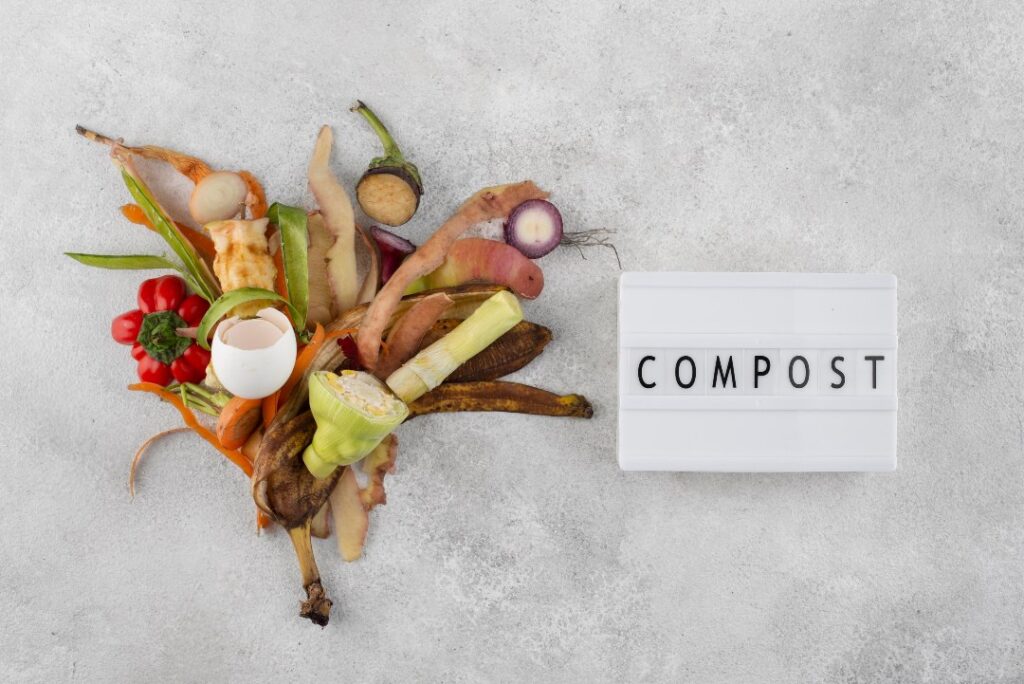
6. Supporting Local Food Systems
Buying locally sourced food significantly reduces food miles, which is the distance food travels from production to the consumer, thereby minimizing the carbon footprint associated with transportation. This also bolsters local economies by ensuring that money spent on food goes directly to local farmers and producers, strengthening community ties and sustainability. This farm-to-table movement prioritizes the direct acquisition of ingredients from nearby sources, leading to less waste through overproduction and excess inventory.
Restaurants and consumers alike benefit from fresher food options, as local sourcing ensures products are not only more flavorful but also retain higher nutritional value due to shorter time frames between harvest and consumption. This encourages a more conscious and responsible interaction with our food system.
7. Food Waste Technology Solutions
The incorporation of food waste technology solutions and conducting regular food waste audits allows for the identification of key areas where water and resources can be saved. By tracking and analyzing where food is wasted from farm to table, these technologies can pinpoint opportunities to improve water use efficiency and reduce waste.
For example, an audit might reveal that significant amounts of water are used to produce food that never reaches the consumer, highlighting the need for better demand forecasting and supply chain management to match food production with actual consumption needs. Through such insights, food producers can implement targeted measures to conserve water, thereby reducing the ecological footprint and enhancing the sustainability of food production.
8. Food Donation and Sharing Initiatives
By connecting the dots between excess food and hunger, food donation and sharing initiative programs effectively reduce the environmental footprint of food production and distribution. In environments where the logistics of food donation are supported by favorable policies and community engagement, significant strides can be made towards sustainability and social welfare. For instance, in the United States, generous tax incentives encourage businesses and farms to donate surplus food, setting a benchmark for global practices.
However, the success of these programs depends on effective collaboration among food industry stakeholders, nonprofit organizations, and regulatory bodies to manage the collection, storage, and distribution of food efficiently. Leveraging logistics, food safety measures, and technology enhances the capacity of these programs to distribute food where it is most needed.
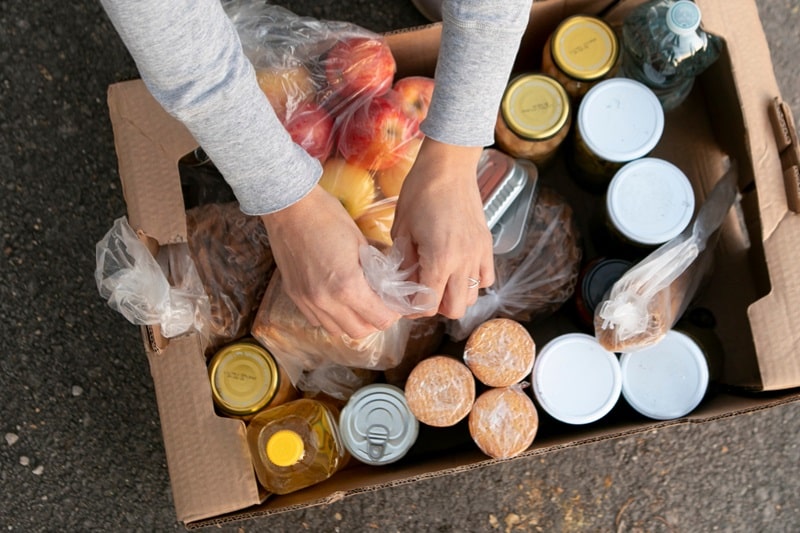
9. Raising Awareness and Changing Behaviors
Public awareness campaigns and educational efforts are instrumental in altering consumer behaviors and attitudes toward food consumption and waste. By disseminating knowledge and raising consciousness about the environmental, economic, and social impacts of food waste, these initiatives encourage individuals and communities to adopt more sustainable practices.
Accurate information and practical strategies, shared through various media and educational programs, can lead to more responsible food purchasing, preparation, and disposal habits. As awareness grows, consumers are more likely to make informed decisions that reduce food waste and its negative consequences and instead contribute to a collective shift towards more sustainable food systems.
10. Government Policies and Incentives
Government strategies in the United States aimed at reducing food waste and promoting sustainable consumption rely on a multifaceted approach, which includes regulatory measures, economic incentives, and educational initiatives targeting all segments of the food supply chain. By providing financial benefits for companies that contribute food, investing in composting and recycling infrastructure, and funding research into sustainable farming techniques, these policies aim to mitigate the environmental effect of food waste. Public campaigns and collaborations with both public and private sectors are also employed to shift consumer behavior towards reducing household food waste, highlighting the importance of individual actions in achieving broader environmental goals.
Conclusion
It becomes evident that the challenge of managing food resources more efficiently requires concerted efforts from individuals, communities, and institutions. As we strive to minimize waste and maximize the value derived from our food, the role of specialized expertise becomes increasingly apparent. Here, Shapiro’s proficiency in food waste management solution presents a compelling solution for entities looking to enhance their sustainability practices.
We have a deep understanding of the complexities surrounding food loss and waste solutions and offer an array of services designed to optimize waste management processes. Our expertise in evaluating waste streams, implementing reduction strategies, and fostering sustainable practices allows us to provide tailored solutions that address the specific needs of our clients.
FAQs About Food Waste Solutions
Reducing food waste is essential for environmental conservation, economic savings, and social benefits. By implementing food waste solutions, we can minimize landfill use, reduce greenhouse gas emissions, conserve resources used in food production, and redirect edible food to those in need. Economically, it also helps businesses and consumers save money and support a more efficient food system.
Food waste primarily ends up in landfills, where it decomposes anaerobically, producing methane, a potent greenhouse gas. Some waste is composted or processed through food waste recycling solutions, turning food waste into valuable compost or biogas, which are more sustainable outcomes.
Food waste occurs across the entire food supply chain, from farms to consumers. However, in many developed countries, the highest proportion of waste is generated by households, followed by the food service industry, including restaurants and catering, and then by retailers.
Research has shown that younger people, particularly those in the age group of 18 to 34 years old, tend to waste more food compared to older age groups. This may be due to lifestyle factors, a lack of awareness or cooking skills, and differing attitudes towards food. Targeted food waste solutions at home and educational campaigns can help address this issue.
Waste significantly impacts the economy by increasing disposal costs, wasting resources used in production, and contributing to environmental degradation, which can lead to increased healthcare and environmental remediation costs.
Waste represents a loss of resources, including money, time, and materials, for businesses. It can increase operational costs, reduce profit margins, and contribute to a negative environmental impact, which can affect a company’s reputation and customer base.
Baily Ramsey, an accomplished marketing specialist, brings a unique blend of anthropological insight and marketing finesse to the digital landscape. Specializing in educational content creation, she creates content for various industries, with a particular interest in environmental initiatives.
